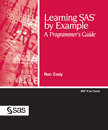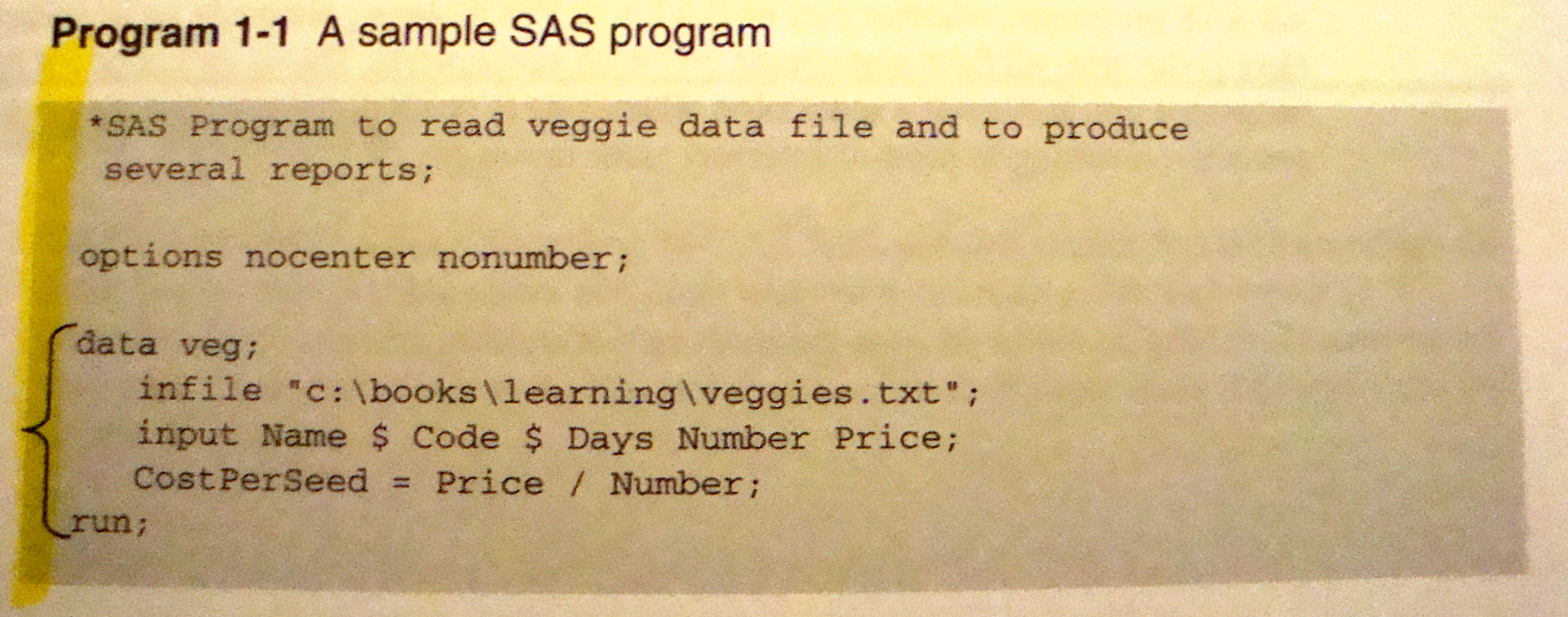Learning SAS by Example: First Impressions
As you may recall, I was super-hyped to receive my SAS book to review from SAS Press.
The book is Learning SAS by Example: A Programmer’s Guide by Ron Cody, and you can pick it up here or here.
A little bit of background about how I came to SAS (aka, life history):
One of the reasons I was really excited to receive it is that, I was going to purchase it anyway. As someone starting in SAS (my company has a lot of data housed in this language and plans to build additional models related to SAS), I started out from scratch. Although I’ve had previous program-oriented experience before (both with very light dabbling in C++ and HTML and with other software packages like STATA in college), I didn’t have much experience actually manipulating large amounts of data with anything other than Excel or Access.
Intuitively (and with a little cajoling from my programmer husband) , I realized that learning SAS would be important to my professional development, both as a consultant and an economic modeler, and a number of other roles besides. While we do use statistical software packages such as eViews at our company, I’ve noticed that SAS is more broadly applicable outside the relatively narrow scope of economic modeling in industries such as pharmaceutical, transportation, and academia. So, I decided to make it one of my priorities in my professional development to learn it.
Getting Started with SAS: Literature
While my job gave me some guidance through mentoring and sending me to SAS I:Programming Basics class, when I was given problems to solve, it was the case that I was sometimes on my own and didn’t understand SAS on the level that I needed to. I did have The Little SAS Book (also known as the Little Blue Book) to start out with.
However, it wasn’t exactly what I was looking for. While it did introduce me to SAS (and I recommend it as an addition to anyone’s library) it does so in a cursory way and is not as readily accessible to reference as Learning by Example is, so far.
Positives
Some of the things I like about Learning by Example from the standpoint of a beginner are:
- An attached CD with all the programs that are in the book (something Little Blue does not have) so you know you are doing the sample problems right (a feature of my SAS intro class that I also really appreciated)
- Right off the bat, a clear explanation of what SAS is (helps beginners who’ve never worked with statistical software packages a lot) that is more of a clear-cut overview than what Little Blue has
-
A sample SAS program in the first couple of pages that I’ve already bookmarked and keep going back to every time I need to start a program from scratch that has the data, infile, and input commands (vital to me because I work with a lot of txt and xls files).
- An aside about Enterprise Guide, the version I use at work. Using Enterprise Guide and this book together is slightly frustrating because, to me, EG is clumsier than regular, old base SAS and perhaps I should look into a special book on it, but everything is easier to do in base SAS.
Negatives
Two negatives I’ve thus far encountered:
- No bolding of terms or key definitions (maybe I’m just used to this from textbooks in college)
- No libname or proc print statements in the first program, which would also be useful as a template when I’m starting from scratch
- From skimming, it looks like there’s a big focus on creating reports and data graphs, something all SAS books have focus on, and, as someone working with raw data, this isn’t very relevant to my needs, so there are whole chapters I might skip.
Thus far, though, the book has been great and clear, and I look forward to working my way through it.

